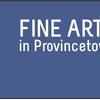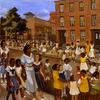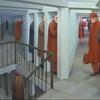A Diamond from His Ashes: Artist Jill Magid's Proposal brings her Barragán Archives project to a startling climax
- SAN FRANCISCO, California
- /
- June 07, 2016
Jill Magid: The Proposal
A two-carat diamond engagement ring grown from the cremated remains of architect Luis Barragán's body brings artist Jill Magid's extended, multimedia project The Barragán Archives to a climax
U.S. premiere on view at San Francisco Art Institute’s Walter and McBean Galleries
September 9 – December 10, 2016
Opening Reception: Friday, September 9, 7-9pm
The Proposal presents the climactic moment within artist Jill Magid's extended, multimedia project The Barragán Archives, which examines the legacy of Mexican architect and Pritzker Prize-winner Luis Barragán (1902–1988). The multi-year project poses piercing, radical, and pragmatic questions about the forms of power, public access, and copyright that construct artistic legacy.
Through this work, Magid asks, “What happens to an artist’s legacy when it is owned by a corporation and subject to a country’s laws where none of his architecture exists? Who can access it? Who can’t?”
The Barragán Archives
In his will, Barragán split his archive into two parts. Along with the vast majority of his architecture, Barragán's personal archive remains in Mexico at his home, Casa Barragán, which is now a museum and UNESCO World Heritage Site. In 1995, Rolf Fehlbaum, the Chairman of the Swiss furniture company Vitra, purchased Barragán’s professional archive, including the rights to his name, work, and all photographs taken of it, and, it is said, gifted it to his fiancé, Federica Zanco. Zanco now serves as Director of the Barragan Foundation. For the last twenty years, however, the archive has been publicly inaccessible, and housed in a bunker at Vitra corporate headquarters.
Luis Barragán’s cultural displacement, from his home in Mexico City to a vault in Switzerland, has distressed architects, artists, cultural historians, and Barragán’s descendents. As Fundación de Arquitectura Tapatía Luis Barragán explained, Barragán's professional archive, including the copyrights to his name, designs, and images "belongs to Mexico and to all people throughout the world..."
Although Barragán's descendants, architectural historians, the Mexican public, and Zanco have debated access to Barragán's work for two decades, only in recent years has the cultural impasse achieved international visibility through Magid's efforts vis-à-vis The Barragán Archives.
In 2013, with initial support from The New School’s Vera List Center Prize for Art and Politics, Magid launched The Barragán Archives to examine the ethics of corporate ownership of an artist's estate. In the past three years, the project has encompassed major installations and performances at art spaces, galleries, and museums around the world. In each case, Magid structured the exhibitions as opportunities to push the narrative forward, and to embody—within the work—the distinct legal copyright parameters governing the countries in which they were shown. During this time, Magid requested access to Barragán's professional estate from Zanco. Magid's request was declined, even as their correspondence became more intimate.
The Proposal
The Proposal achieves a thrilling and unexpected salvo in Magid’s long-term engagement with Barragán, Zanco, Barragán’s descendants, the Mexican Government, and the indispensable creative legacy that binds them. Through the public exhibition of The Proposal, Magid will present Zanco with the gift of a two-carat diamond, grown from the cremated remains of Barragán's body, set into a ring, in exchange for the return of his archive to Mexico.
In July 2014, Magid staged The Family Dinner at Museo de Arte de Zapopan, Guadalajara, for eighteen members of the Barragán family including patriarch Hugo Barragán Hermosillo. At this event, the family unanimously pledged its support for Magid’s concept for The Proposal. Following a year of negotiations with the Barragán family and approval of the Mexican government, on September 23, 2015, a portion of Luis Barragán’s remains were removed from the Rotunda of the Illustrious People of Jalisco, during a ceremony attended by the family and officials of the Mexican Government. These remains were grown into a rough-cut, two-carat stone in Chur, Switzerland.
The Proposal serves as both a poetic counterproposal to Fehlbaum's gift to Zanco, and a re-animation of a decades-long stalled negotiation, elegantly and forcefully rejoining the divergent paths of Barragán's professional and personal archives.
According to Magid, “The Proposal uses the exhibition as an active platform—as an artwork and a potential tool of negotiation. Part of its beauty lies in this dual existence. Many parts of this project would remain stalled if they weren’t expressed in poetic terms. Conceptually, poetry—originality—is the normative grounds of fair use, which permits, pragmatically, engagement with certain objects and works. Poetry is essential to my contract negotiations, letters to Federica, and engagements with copyright law. In this context, poetry is eminently pragmatic.”
The exhibition includes the engagement ring and diamond inscribed with the text I am wholeheartedly yours. A series of vitrines contain Magid’s correspondence and agreements with the Barragán family and Mexican Government, gemological certification documents, and her proposal letter to Zanco. A video, The Exhumation, documents the exhumation ceremony, in which a silver horse—the precise weight of the removed ashes—was symbolically gifted into Barragán's urn. Additionally, a large-scale Tapete de Flores, produced by Guadalajara-based artisans, is representative of the “carpet of flowers” made annually for The Day of the Dead celebrations of family members who have died.
Hesse McGraw, San Francisco Art Institute (SFAI) Vice President for Exhibitions and Public Programs, and curator of the exhibition states, “The Proposal exemplifies the catalytic role artists can serve in unexpected contexts. Magid’s collaboration with the Barragán family and the Mexican government stages an engrossing sequence of questions surrounding Barragán’s legacy, intellectual property, corporate control, and access to knowledge. At its core, The Proposal celebrates the belief that an artwork, and by extension an artist’s legacy, is a gift. This remarkable work illustrates the instrumental value artists bring to public life.”
Probing Barragán's official and private selves, and the unique interests of the multiple individual, governmental, and corporate entities that have become the archives’ guardians, Magid directly engages complex intersections of the psychological and the judicial, national identity and repatriation, international property rights and copyright law, authorship and ownership, the human body and the body of work.
The Proposal is currently on view at Kunst Halle Sankt Gallen in St. Gallen, Switzerland—its inaugural presentation, which afforded Magid the opportunity to personally share the work with Zanco. On May 31, 2016, Magid proposed to Zanco in Switzerland. With this artwork, Magid’s radical, poetic act not only exhumed Barragán’s physical remains, but opened the possibility to bring his spiritual and artistic legacy up out of the vault and back to life.
The Proposal is commissioned by San Francisco Art Institute and curated by Hesse McGraw, SFAI Vice President for Exhibitions and Public Programs.
The Proposal is on view at Kunst Halle Sankt Gallen in St. Gallen, Switzerland until August 21, 2016 and will make its U.S. premiere at SFAI September 9–December 10, 2016.
About the Artist
Through an artistic practice that is at once visual, textual, and performative, Jill Magid (*1973, lives in New York) forges intimate relationships within bureaucratic structures—flirting with, seducing, and subverting authority. Her projects probe seemingly impenetrable systems, such as the NYPD, the Dutch Secret Service, surveillance systems, and, most recently, the legacy of architect Luis Barragán, and infiltrates and unsettles these forms of power. Her work dynamically locates unexpected and rich communities within faceless bureaucracies.
Her works often take the form of elliptical love letters that draw out human qualities in agents of control. These charged encounters are founded on mutual trust, but are also fraught with ethical complications and social asymmetries. Through her works, Magid reframes the complexity, potential intimacy, and absurdity of our relationship with institutions and power.
Her performances and exhibitions have been commissioned and presented by the Whitney Museum of American Art, New York; Tate Modern, London; UC Berkeley Art Museum and Pacific Film Archive; The Museum of Modern Art, New York; and the New Museum, New York; among other venues. Since 2013, The Barragán Archives has been presented at Art in General, New York; Performa 13, New York; Yvon Lambert, Paris; RaebervonStenglin, Zurich; South London Gallery; Museo D’Art Zapopan, Guadalajara; Art Basel Parcours; and Labor Gallery, Mexico City. She is an Associate of the Art, Design and the Public Domain program at the Graduate School of Design at Harvard University.
Magid is represented by LABOR, Mexico City; RaebervonStenglin, Zurich; and Galerie Untilthen, Paris.
Related Media and Events
A documentary about The Proposal will premiere on TheIntercept.com in Fall 2016. Field of Vision, a filmmaker-driven visual journalism film unit created by Laura Poitras, AJ Schnack, and Charlotte Cook, commissioned the documentary, which is directed by Magid, and filmed and produced by Jarred Alterman.
The Proposal will be accompanied by a co-publication between Sternberg Press; San Francisco Art Institute; and The Vera List Center for Art and Politics, The New School. Released as part of the Sternberg Press Critical Spatial Practice book series, the book is edited by Nikolaus Hirsch, Carin Kuoni, Hesse McGraw, and Markus Miessen, and features contributions by Nikolaus Hirsch, Jill Magid, Hesse McGraw, Leonardo Díaz Borioli, David Kim, Daniel McClean, Cuauhtémoc Medina, Beth Povinelli, and Ines Weizman.
The publication will be launched at a conference at The Vera List Center for Art and Politics, The New School, New York City, on September 14, 2016.
Exhibition Opening Reception
Friday, September 9, 2016, 7-9pm
FREE and Open to All
Walter and McBean Galleries, San Francisco Art Institute, 800 Chestnut St., San Francisco, CA
About Walter and McBean Galleries
SFAI’s Exhibitions and Public Programs provide direct access to artists and ideas that advance our culture. The Walter and McBean Galleries, established in 1969, present exhibitions at the forefront of contemporary art practice. The galleries serve as a laboratory for innovative and adventurous projects and commission new work from emerging and established artists.
About San Francisco Art Institute
Founded in 1871, SFAI is one of the country's oldest and most prestigious institutions of higher education in the practice and study of contemporary art. As a diverse community of working artists and scholars, SFAI provides students with a rigorous education in the arts and preparation for a life in the arts through an immersive studio environment, an integrated liberal arts and art history curriculum, and critical engagement with the world. Committed to educating artists who will shape the future of art, culture, and society, SFAI fosters creativity and original thinking in an open, experimental, and interdisciplinary context.
General Information
SFAI’s Walter and McBean Galleries are open to the public Tuesday 11 AM – 7 PM and Wednesday – Saturday, 11 AM – 6 PM and are free to the public. For general information, the public may visit sfai.edu or call (415) 749-4563. SFAI is located at 800 Chestnut St., San Francisco, CA.















